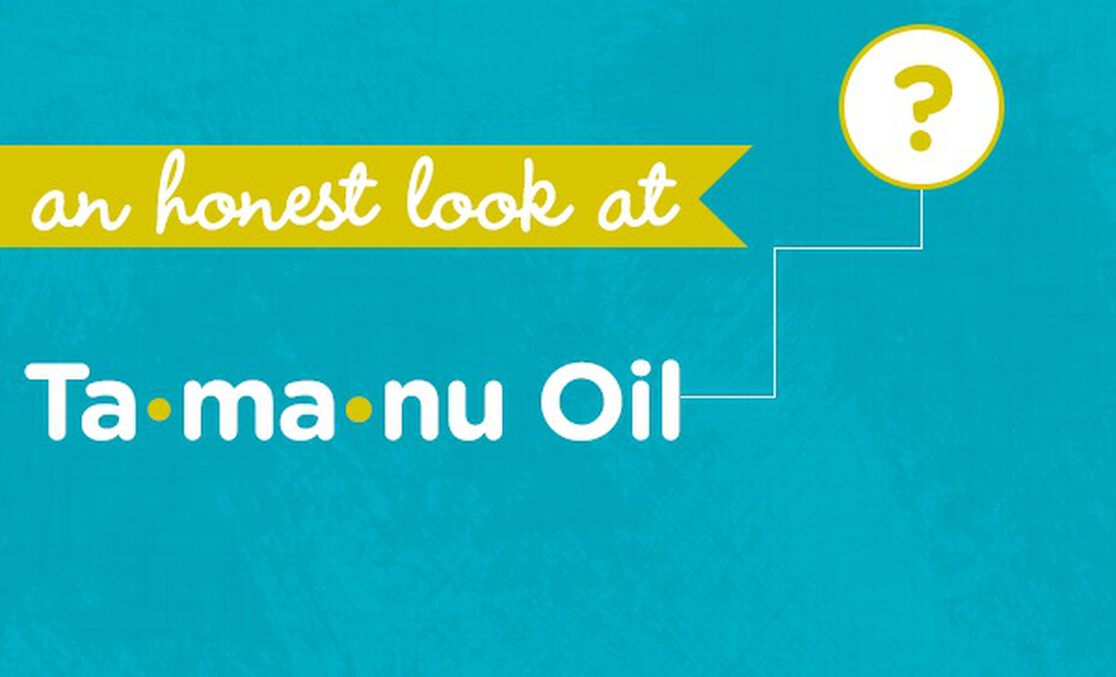This is part of our ongoing series to help consumers better understand our product formulations. If there’s ever a specific ingredient you’d like to know more about, please let us know!
Ingredient:
Tamanu Oil
Botanical name:
Calophyllum tacamahaca or calophyllum inophyllum — a name which comes from its beautiful, veined leaves.
-
calo = beautiful
-
phyllum = leaf
-
ino = vein
What it is:
The Tamanu Tree is indigenous to the tropics of Southeast Asia and the Polynesian islands (1). This beautiful, evergreen tree blooms twice a year with fragrant white flowers, which later produce clusters of fruit similar in appearance to small green apricots (2). Inside the fruit is a nut and inside the nut is a small pale kernel (2). Although Tamanu oil comes from the kernel, it starts out very dry — a highly unlikely place to find a rich oil upon first observation (2). Once the kernel is extracted from the fruit, it is cracked and laid out to dry for a month or two (2). After drying out, the kernels turn a brownish-red, chocolatey color and become sticky (2). Finally, Tamanu oil is extracted from the sticky goo by cold-pressing and filtration (1).
Not only is this process time and labor intensive, it also takes a lot of fruit to create a little oil. Typically, it takes roughly 200 pounds of Tamanu fruit (approximately what one tree produces each year) to make just over 10 pounds of oil, leading to prices that can run as high as $1440 per gallon (3). That’s some good stuff!
What it does:
Due to its many uses with wide-ranging benefits, the Tamanu tree was once considered sacred to the Polynesians (1). To this day, the Tamanu Tree and its oil are revered and used widely for cosmetic and medicinal purposes (3).
It’s only been in the past century that people from elsewhere in the world have caught wind of the wonders of this oil. Since the 1930s, researchers have been studying Tamanu oil in labs and hospitals around the globe and have found that it is incredibly rich in fatty acids and beneficial compounds (2). Because it helps support and balance skin moisture, we use it in our widely acclaimed Healing Balm (3,4).
References:
- Dweck, A. C., & Meadows, T. (2002). Tamanu (Calophyllum inophyllum)–the African, Asian, Polynesian and Pacific Panacea. International journal of cosmetic science, 24(6), 341-348.
- Kilham C. Tamanu Oil: A tropical topical remedy. HerbalGram, 2004.
- Friday, J. B., & Okano, D. (2006). Calophyllum inophyllum (kamani). Species Profiles for Pacific Island Agroforestry, 2(1), 1-17.
- Lim, T. K. (2012). Calophyllum inophyllum. In Edible Medicinal And Non-Medicinal Plants (pp. 7-20). Springer Netherlands.
This post was revised as of 1/14/2016.
We aim to provide you with the most honest and credible information possible. This article was reviewed for accuracy by The Honest Team and its internal technical experts.
blog_review_statement



